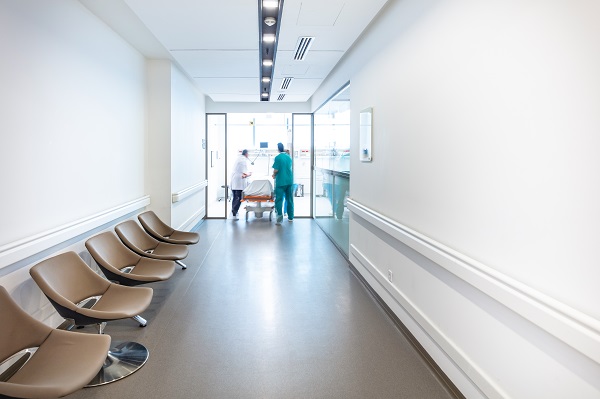By William R MacGowan
For decades, water, gas and electricity have been the key utilities of a building infrastructure, but a new utility has emerged and it has become just as important as the original three. It’s the backbone of communication for OT and IT Platforms in a hospital, ensures medical devices are operating effectively and securely, and data is being used efficiently. Enter the fourth utility: the converged network.
From accessing patient information, operating life-saving machinery or ensuring the best patient experience possible, connectivity is critical. Leveraging the fourth utility is no longer an advantage, but a crucial move in future-proofing the healthcare industry.
What is the fourth utility?
Network infrastructure is increasingly being viewed as a utility like gas, electricity and water.
With an abundance of devices and applications being connected at once, solutions to nearly any operational challenge are as seamless as the tap of a button. Lightbulbs, thermostats and even vending machines can be enabled by internet protocol that is interconnected with data management systems and the building’s infrastructure as a whole.
The fourth utility can ensure that the patient’s experience is personalized, comfortable and programmable. It can help administrative staff and healthcare professionals access needed patient files, conduct virtual rounding, support asset tracking and much more. With that in mind, healthcare providers should be considering how their network infrastructure is just as important to their employees and patients as the three original utilities.
The rise of Smart Hospitals
As smart buildings are making their way into the mainstream, high-speed Wi-Fi and open data connectivity have become more than amenities, they’re an indispensable part of day-to-day operations.
Healthcare is changing by the minute and infrastructure must follow suit. Hospitals that use technology to optimize clinical processes, management systems, and patient experiences by utilizing the fourth utility, have increasingly become the norm and form a crucial part of our healthcare system.
From a business management perspective, the most important element in a smart hospital is the ability to provide a valuable service without sacrificing time, patient care or cost efficiencies. With the fourth utility, the implementation of new technologies is seamless and integrated within the whole hospital without sacrificing any critical healthcare requirements. In fact, it may improve treatment, time efficiencies and the overall patient experience.
Smart hospitals will be playing a critical role in the recovery from the pandemic. The technology used in smart hospitals can alleviate the pressure of the demand by making triage, treatment, and timing more efficient for patients and staff alike. Whether through telehealth, mobile clinics, or remote research, healthcare professionals are connected, can share information and make critical decisions with the support from the hospital’s network.
Key drivers for leveraging the fourth utility
This year has been anything but ordinary for the healthcare industry, but as patient and care needs continue to rise, so does the necessity to adapt to the latest technologies. Some key drivers for healthcare providers to leverage the fourth utility include:
- Cost savings: The fourth utility can assist in reducing costs for healthcare providers by resolving time efficiencies, providing more personalized treatment, and more generally by offering accessible, easy-to-use data at the touch of a button.
- Energy/carbon footprint: The fourth utility can offer solutions to monitor and improve their carbon footprint, providing building managers with insights into the way their buildings are operating.
- Security: From personal, asset, and cybersecurity, outdated equipment, immeasurable amounts of data, and complex infrastructure can put hospitals behind. Leveraging the fourth utility can ensure that each element of security is not only protected but top of mind
- Space utilization: Space is a commodity in healthcare. The fourth utility can assist in ensuring that patient care is a priority while ensuring that all spaces are used to their fullest potential by alerting staff when space is free, when rooms are over occupancy or when a room needs to be repurposed.
- Patient experience: From changing a room’s temperature or accessing their own charts, the fourth utility can assist in ensuring that the patient experience is the most connected, personal, and adjustable they can expect.
Future-proofing healthcare
Looking ahead, hospitals may be designed differently. Rooms themselves may be personally programmable to enhance the patient experience, data management will be accessible and efficient, and hospitals will be as energy efficient as possible.
Implementing and relying on this interconnected framework can maximize efficiencies while ensuring the utmost patient care. These solutions are uniquely integrated into the advantages of leveraging the fourth utility within the healthcare industry and looking ahead, will future proof the healthcare industry as it enters this period of transition.
**Sponsored content
William R MacGowan, P.Eng., CEM, is Director Digital Buildings, Cisco Canada.


